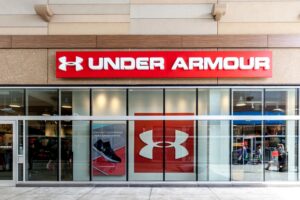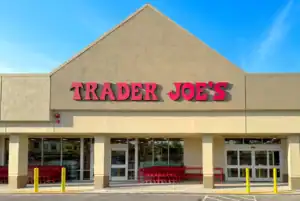Photo by Franki Chamaki on Unsplash
July 15, 2024
Will Stop & Shop Be Able To Survive After Its Store Closures?
In May, Stop & Shop announced its plan to close an unspecified number of underperforming grocery stores in the Northeast to ensure the long-term health of the business.
The announcement, made by JJ Fleeman, CEO of parent company Ahold Delhaize USA, during an investor presentation, emphasized the need for decisive actions as the company focused on stronger market areas. Despite the closures, Stop & Shop remained committed to investing in store remodels and maintaining competitive prices. The company had already remodeled over 190 stores by the time of the announcement and emphasized its dedication to social responsibility initiatives, including supporting in-school food pantries and reducing waste.
On July 12, Stop & Shop specified that it plans to shut down 32 underperforming locations in Connecticut, Massachusetts, New Jersey, New York, and Rhode Island, providing a list of the specific locations. They will close on or before Nov. 2, 2024, according to the company’s press release.
The closures of Stop & Shop have spurned various reactions and social media posts. Many local communities are reeling from the news and concerned about the detrimental effects of store closures in their areas.
On Reddit, Stop & Shop forum members — including a supposed grocery manager with one year of experience and an eight-year veteran — both expressed frustration with declining work conditions, prioritizing displays over restocking, and excessive workloads without benefits. They criticized high prices, poor product quality, and incompetent management, noting chronic understaffing and lax hiring practices, leading to unreliable employees. Both are concerned about the company’s future viability and are contemplating leaving.
In Connecticut, local officials were surprised to learn about Stop & Shop’s closure of five stores, as Torrington Mayor Elinor Carbone found out through social media and had to reach out to the company for confirmation.
Meanwhile, in Worcester, Massachusetts, District 1 City Councilor Jennifer Pacillo is urging the city to take action to prevent the closure of the Stop & Shop at Lincoln Plaza. Local customers are concerned about losing a convenient store in their working-class neighborhood.
Stop & Shop’s plan to close eight locations in Massachusetts, including the crucial Brockton store, has left residents concerned about limited grocery options. Shoppers expressed disappointment over the closure, highlighting the store’s importance in the community. Mayor Robert Sullivan criticized the decision, noting it would force locals to travel further for groceries. He also mentioned how promises were made that the Brockton store would not be one of the locations being closed. A Stop & Shop spokesperson acknowledged the difficulty of the decision but emphasized it was necessary for the brand’s future growth.
Other locations set to close include 10 stores in New Jersey, seven in New York, and two in Rhode Island.
Last year, Stop & Shop expanded the use of Marty the Robot, created by Badger Technologies, across over 300 stores in the Northeast. Marty now conducts product checks to improve shelf availability and detects misplaced items, in addition to spotting floor hazards. The robot’s enhanced capabilities allow store associates to focus more on customer service. Marty also supports community initiatives like the “Feed it Forward” campaign. Equipped with advanced technology, Marty enhances real-time inventory tracking and store efficiencies, contributing to a better shopping experience and improved operational accuracy for Stop & Shop.
“Marty has delivered tremendous value for us already in terms of creating a safer in-store environment, and we’re excited to announce these new automated shelf-scanning capabilities, which will deliver even more value for customers and associates. With Marty’s new ability to find and fix on-shelf product availability and to confirm pricing information, associates can spend even more time with shoppers.”
Gordon Reid, president of Stop & Shop, via Supermarket News
Marty the Robot and other similar robots are also meant to improve retailers’ omnichannel operations.
Discussion Questions
How will Stop & Shop’s balance of store closures and remodels impact long-term brand loyalty and customer satisfaction?
Given the mixed reactions from employees and communities to recent store closures, what strategies should Stop & Shop adopt to better manage stakeholder communication and expectations during significant operational changes?
How can retailers like Stop & Shop effectively integrate automation technologies such as Marty the Robot without losing the human touch that customers value?
Poll
BrainTrust
Mark Self
President and CEO, Vector Textiles
Joel Rubinson
President, Rubinson Partners, Inc.
Sarah Pelton
Partner, Cambridge Retail Advisors
Recent Discussions







Stop & Shop has been one of the laggards of Ahold Delhaize’s US division for many years, and it is a big contributor to the lackluster sales growth. While the business has refurbished some stores, many remain very badly run and have issues with customer service, shopkeeping standards, and out-of-stocks. On top of all of this, prices are broadly uncompetitive. So, it’s hardly surprising the chain has lost sales and market share. Closing stores will cut out some of the rot, but it does not resolve the underlying issues. That includes ongoing problems with unions and strikes, which have plagued the chain for too long. It would not surprise me if further closures were needed in the year ahead, or if Ahold Delhaize tries to dispose of the business.
This. I have been in some well run S&S stores, clean, bright, stock levels full to almost full , good customer service. I have also been in some not so good stores, poor stock levels, little to no customer service, high, prices, and dingy. The closing of some of their stores will help the bottom line, but the inconsistencies still are a big part of the root of their issues. I hope they take the time to right the ship before they have to close even more stores.
Sounds like both lack of compelling value proposition and poor execution. Operating in the muddy middle is very difficult, especially if the basics of full store shelves and an available employee isn’t possible. If they focus now on new or remodeled stores, they have to get this right, otherwise more will fail.
+1, While it may stop some bleeding, in order to survive Stop & Shop needs to clean up its operational issues and offer something besides location (“it’s my closest grocer”) to customers to differentiate it. Today there’s little reason to drive past another grocery store to visit a Stop & Shop.
This story could have really benefited from telling us how many stores they were starting with, but having looked it up and concluded it isn’t 33 – it actually seems to be ~400 – I’ll say that “yes, they’ll pull thru.” Clickbait headlines notwithstanding, store rationalization is a fact of life, and this doesn’t strike me a remarkable; 32 every year? Yeah, then we can talk.
Don’t you get weary of story telling that’s missing half the facts? Or more? This isn’t as epic as Target highlighting the closure of 9 stores (out 1290, not mentioned) and citing excess shrink as the reason for margin losses and breaking the leases. The whole story had to get walked back, for obvious reasons. Still, it’s not all that different from the Target tale. A story to calm the savage shareholder beast.
I haven’t been in a Stop N Shop since I left Boston 22 years ago, and at that time, they were into Super Stop N Shops, which were supposed to be like hypermarkets. Then they had the 6 year “shopping buddy” pilot after I moved.
Maybe they’ve lost sight of the basics? Clean store, good prices, nice selection and in stock on the most popular items? Then there will be a whole different story to tell.
From my store visits and our analysis, I can confirm that they have lost control of many of the basics – at least at many stores. Some of the newer ones are better, but they still have staffing and management issues.
I have visited several Stop & Shop locations, and it is my least favorite option in the Northeast. The prices are high, many items are often out of stock, and I have found expired items on shelves multiple times. Closing stores won’t fix these issues. Ahold Delhaize needs to critically review its leadership, merchandising, buying strategies, and store operations. Additionally, Stop & Shop’s treatment of employees appears poor, leading to unhappy staff and, consequently, unhappy customers. Significant changes are necessary to improve both customer and employee satisfaction.
I have never been inside of a Stop N Shop However I have been in Many Food Lion’s and also Giant’s. Food lion seems to vary between stores that are “OK” to stores that are Pretty NICE and I MUST Admit ALL the Giant stores I have been in have ALL been Terrific ! –EVERY ONE! Ahold Delhaise seems to know how to do it — where Giant is concerned. They should study and review best practices and attempt to replicate that across all banners — Yes I Know — I Can Hear you all— “Don’t you think they are doing that Already?” Well, I Hope that they are.
Closing stores and reducing staff might save Stop n Shop, but more often than not store closures have both positive and negative consequences.
With fewer stores, a retail chain loses a significant number of customers, and that is not a good thing. Noteworthy to me is that many of “underperforming” stores are within a mile or so of a competitor’s store, not underperforming.
Granted, lack of law enforcement encourages theft, which contributes to underperformance.
Many other options exist for retailers to turn their businesses around and survive, and the majority of these options are better. -Db
Closing underperforming stores strikes me as a good and necessary decision. Too often, manufacturers stay with underperforming products long after they should have been eliminated, and companies stay with underperforming divisions long after they should have been closed.
The other issues cited by my colleagues are much more likely to hurt Stop and Shop than store closures.
Stop & Shop can close all the stores they want and put a robot in every aisle, they will still have the issue of inconsistency across the chain. That needs to be fixed as soon as possible, otherwise we will soon be reading about the next wave of closures.
The biggest question I have is who would miss them if they went out of business???
I am inclined to write “put a fork in this one” however it may still be too early for an obit.
You put your finger on the core issue, Mark. Inconsistency is the devil here.
Closing a few dozen poor performing stores out of 400 is not a disaster for the company (although it displaces 3,000-4,000 employees). Attacking the root causes of their failure will be crucial.
Real estate portfolio management, some new, some reno, some close. Next…..
That reality aside…..economics does seem to be creating food deserts for people who live in less densely populated areas.
And that IS the sad part in this. It’s the people in the community who lose out on grocery store choice and availability of fresh food.
Targeted store closings may help in the short term and remodels are nice, but in this case, Stop & Shop has serious, fundamental weaknesses that unaddressed, will only result in continued and more rapid decline:
Eroding working conditions and lackluster culture
Failure to be price competitive
Less than optimal product quality and out-of-stocks
Underwhelming in-store customer experience
Collectively, these issues are counterproductive to nurturing employee retention, customer satisfaction, much less long-term loyalty or building a relevant, sustainable brand.
I’ve never been in a Stop & Shop, but can say with confidence that grocery store failures have to do with one or more of several things – the location and trade area are not aligned, the value/brand proposition isn’t clear or mismatched with customers, the product mix isn’t what customers want, or operational execution is poor – meaning they aren’t delivering on what is being promised.
Having a robot roam between customers is a dicey because many feel its either in the way, it won’t know as much as an employee, or its just a creepy turn-off. If primarily there to check stock levels, after closing is the best time to let it loose.
Marty the Robot appears to be throwing money at the wrong problem – he can’t stock the shelves, answer customer questions, etc. Hiring more employees to unload the trucks quicker and get the shelves stocked ASAP is the lowest hanging fruit here.
I have a hypothesis that once a chain starts closing a significant number of under performing stores, it can become a death spiral. Usually there is a reason that a portion of a chain’s stores are under water that is indicative of an underlying, more pervasive problem. as you close stores, you lose trading area and advertising efficiences. You also lose the effect (unmeasurable but real) of the signage influence as people drive around.
The Stop & Shop business model and in-store experience are relics of a bygone grocery shopping era. Despite the parent company, Ahold Delhaize’s capital investments in infrastructure, technology, and store modernization, the chain’s brand equity has taken a significant hit over the past ten years.
Stop & Shop’s value proposition in the Northeast has diminished as consumers navigate to Whole Foods, Trader Joe’s, Aldi, Costco, Target, and other competitors. The brand has been really impacted by the lack of value-based pricing, poor execution at the store level, inconsistent brand standards, a lack of organic and premium products, and broad supply chain and fulfillment challenges.
Certainly, Ahold Delhaize can follow the game plan of cutting its way to growth by shutting down 32 underperforming locations in the Northeast. However, unless Ahold Delahize makes some bold changes to the Stop & Shop brand value proposition and determines ways to connect with Millenial and GenZ consumers, this will only be a race to the bottom.